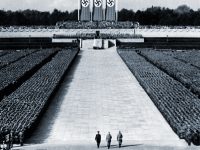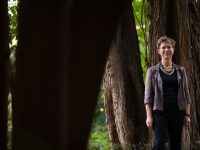The story of Mileva Marić
Did Einstein’s first wife contribute to his scientific work?
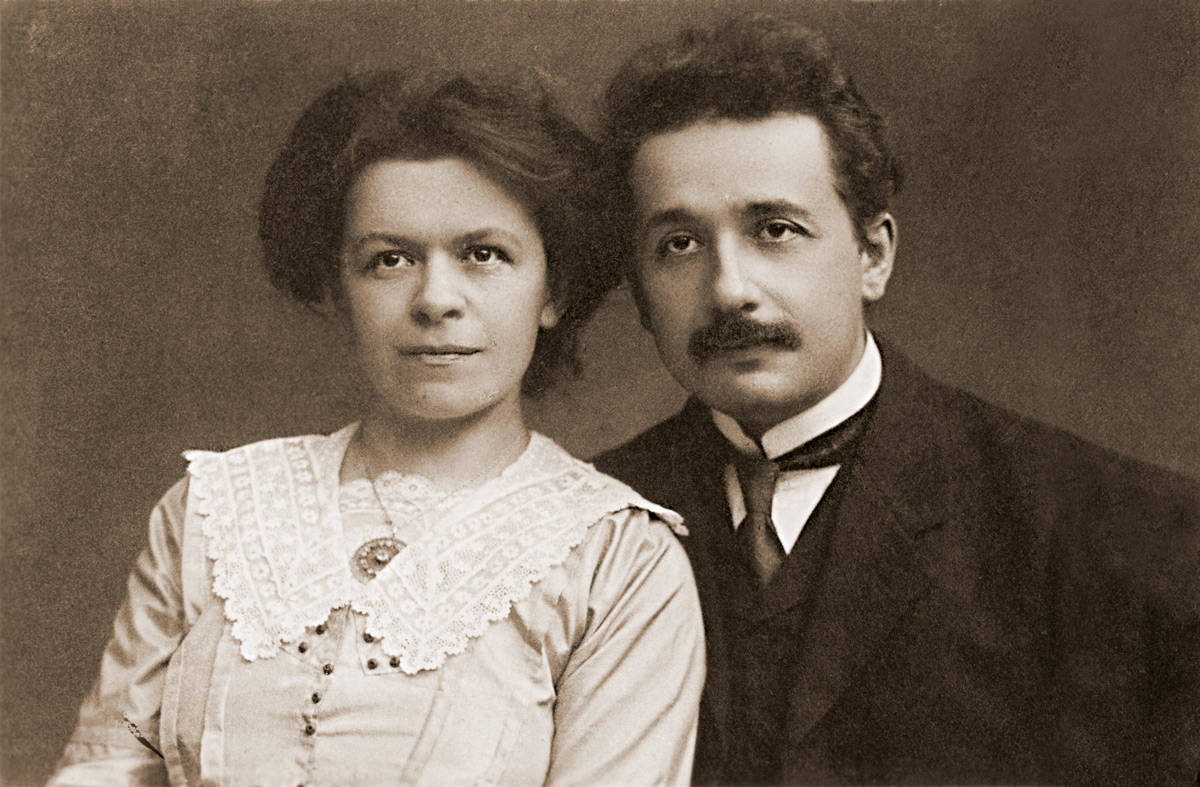
It is currently widely believed that Einstein’s first wife, Mileva Marić, made significant contributions to his scientific work. Numerous publications since 1990 have variously contended that she co-authored his celebrated 1905 papers, did the mathematics for the special relativity paper, or even continued to collaborate with him up to the time of the birth of the couple’s second son in 1910. In this article the author cites the mostly widely disseminated claims and provides evidence that they do not withstand close examination. Citations are given for more detailed refutations of these claims. It is concluded that there is no good evidence that Mileva Marić was Einstein’s secret collaborator.
Keywords: history of science, physics, Mileva Marić, Albert Einstein.
Mileva Marić, the first wife of Albert Einstein, was born on December 19, 1875, to Miloš and Marija Marić in the village of Titel in Vojvodina, Serbia, at that time part of the Austro-Hungarian Empire. Biographical accounts indicate that she excelled in most subjects during the early years of her schooling, though the handicap of a limp resulting from having been born with a congenitally displaced hip tended to isolate her from her fellow pupils. After her father was appointed to a post as an official at the High Court of Justice at Zagreb, Croatia, in 1892, she enrolled in year 10 at the (predominantly boys) Royal Higher Gymnasium for the academic year 1892/93. She remained there for two years, and, as recorded in the Zagreb State Archives, her final semester grades in 1894 were moderately good, with grades C in most subjects, and B in both physics and mathematics, on a scale A-E (Esterson & Cassidy, 2019, p. 269).
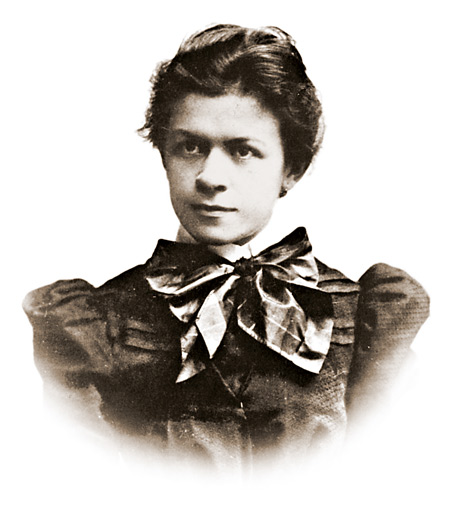
Biographical accounts indicate that Mileva Marić excelled in most subjects during the early years of her schooling. Marić moved to Zurich in 1894 where she could prepare for a university education, because women in Serbia were not allowed to attend university. In the image, Mileva Marić in an 1896 portrait. / Bernisches Historisches Museum / Public Domain
Since at that time it was not possible for a girl to obtain a university education in the Austro-Hungarian Empire, Miloš Marić accompanied his daughter to Switzerland in the autumn of 1894 to enable her to enrol at the Zurich Higher Girls’ School. As she had enrolled late, Marić’s final academic year (year 12) stretched to the spring of 1896. There are no surviving records of her school grades at that time; however, she went on to pass the Matura (university entrance level) examinations in that same spring. She spent the summer semester of 1896 on a course at the Medical School of Zurich University, leaving open the possibility that she was considering a career in medicine. In the event, after being required to take the mathematics components of the Zurich Polytechnic entrance examinations (for which her average grade was 4.25 on a scale 1-6 [Trbuhović-Gjurić, 1988, p. 60]), she enrolled for the course VIA for intending teachers of mathematics and physics in secondary schools. By then she was twenty years old.
In the same small group, together with four other young men, was the seventeen-year-old Albert Einstein. From correspondence between them in the autumn of 1897, when Marić chose to spend a semester as an auditor at Heidelberg University, we know that within a year they had become firm friends. Einstein soon became disillusioned with the physics curriculum, which failed to cover such recent developments as Maxwell’s electromagnetic equations, and he sought out books by eminent scientists on extra-curricular physics. At Einstein’s instigation, the two students studied this material together, frequently in the house where Marić lodged with several other young women. By 1899 they were evidently in love, as their correspondence from this period amply demonstrates. Though both achieved high grades in the Polytechnic intermediate diploma examinations, this was not the case when they took the final diploma examinations in July 1900. However, whereas Einstein achieved moderately good grades sufficient for him to be awarded a diploma, Marić fared less well, and, with a poor grade in the mathematics component (theory of functions) of 2.5 on a scale 1-6, she failed the examinations. Out of five grades Einstein scored higher than Marić on four, while they had equal grades in Experimental Physics. Likewise, on their respective Leaving Certificates, apparently an averaging of their semester grades, Einstein scored higher than Marić for the majority of the subjects they studied in common (Einstein, 1987, docs. 28, 67; Trbuhović-Gjurić, 1988, p. 61).
«Mileva Marić enrolled for the course VIA for intending teachers of mathematics and physics in secondary school. In the same small group was Albert Einstein»
Having unsuccessfully attempted to obtain a post as an assistant with the head physics professor, Heinrich Weber, with whom he had a poor relationship, Einstein obtained temporary teaching posts over the next two years, while Marić remained in Zurich to retake the final diploma examinations in July 1901. This time she was nearly three months pregnant with Einstein’s child, and failed a second time without improving her grade average (Stachel, 2002, pp. 40, 52, n. 22). She returned to her parents’ place in Novi Sad, Serbia, where she remained for most of 1902, not having achieved her goal of a teaching diploma. (The fate of their child, a girl they named Lieserl, is unknown; she either died in infancy or was given up for adoption.) The couple eventually married in January 1903 in Bern, where Einstein had obtained a post at the patent office. They would later have two sons, Hans Albert and Eduard, born in 1904 and 1910 respectively.
The alleged Einstein-Marić collaboration
With this background in mind, I shall now examine the widely disseminated claims that Marić collaborated with Einstein on his scientific work, notably in regard to his celebrated papers of 1905, and, some have claimed, for considerably longer than that. I shall take some of the central contentions in turn and examine the evidence that purportedly supports them.
A frequently cited claim in relation to the three most ground-breaking the 1905 papers is that, in the words of Senta Troemel-Ploetz: «Abram F. Joffe, the famous Russian physicist, who was then an assistant to [Wilhelm] Röntgen (a member of the editorial team that examined the articles sent to Annalen der Physik for publication) wrote in his Erinnerungen an Albert Einstein (Joffe, 1960) that the original manuscripts […] were signed Einstein-Marić» (Troemel-Ploetz, 1990, p. 419; see also Gagnon, 2016, p. 240). On a minor point, Joffe’s memorial article was originally published in 1955, not 1960. More importantly, Troemel-Ploetz, and subsequent commentators (e.g., Gabor, 1995, p. 20), have taken Trbuhović-Gjurić’s account (1988) as providing historical evidence that Mileva was co-author of the papers in question (according to Trbuhović-Gjurić, Joffe saw the articles when Röntgen [his doctoral advisor] asked him to help review them for the Annalen der Physik).
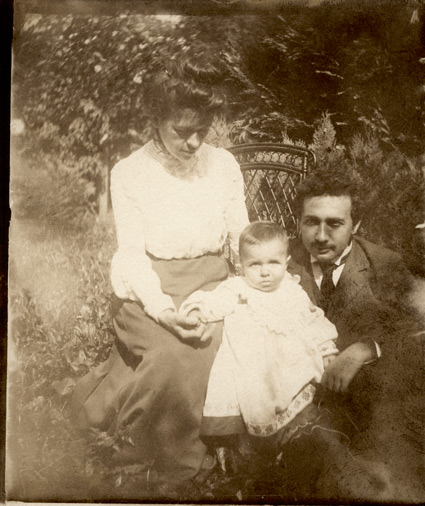
Mileva Marić and Albert Einstein with their son Hans Albert, in a portrait taken between 1904 and 1905. The couple were married in 1903. Some claim that Marić helped Einstein with his physics theories, but these claims are only based on hearsay. What we do know is that Mileva Marić played a pioneering role at a time when women had very few opportunities to receive physics and mathematics training. / ETH Bibliothek Zürich, Bildarchiv / Hs_1457-72 / CC BY-SA
The truth of the matter is that, rather than quoting Joffe’s words, Trbuhović-Gjurić misleadingly paraphrases them, and adds contentions of her own. Joffe did not state that he had seen the original submissions, nor that they were signed Einstein-Marić. He stated explicitly that the papers were the work of a bureaucrat at the patent office in Bern, namely Albert Einstein. The subsequent confusion arises from the fact that Joffe referred to Einstein as «Einstein-Marić», explaining parenthetically that (as he thought) in Switzerland the husband includes his wife’s maiden name in his married surname. Moreover, the story that Joffe saw the original papers, and that Röntgen was asked to review them, is a product of Trbuhović-Gjurić’s imagination, as John Stachel has demonstrated in his comprehensive examination of the story in which he provides a translation of Joffe’s actual words (Stachel, 2005, pp. LIV-LXIII).
In a letter that Einstein sent to Marić in March 1901 he wrote: «I’ll be so happy and proud when we are together and can bring our work on relative motion to a successful conclusion!» (Renn & Schulmann, 1992, p. 39). This sentence has been repeatedly quoted as evidence that Marić collaborated with Einstein on the special relativity theory. But is that really the case? The sentence in question was written from Einstein’s parents’ home in Milan some nine months after he had obtained his diploma during a lengthy period when they were destined to live in different towns for some eighteen months, a situation that Marić found distressing, as she confided in letters to her close friend Helene Kaufler (Popović, 2003, pp. 67–68, 77). It is embedded in a paragraph in which Einstein is endeavouring to reassure Marić of his continuing love, and at a time when he still had hopes that they would have a future together working on scientific research (Renn & Schulmann, 1992, pp. 52, 73). Against that one unspecific sentence there are several other letters in which Einstein reports on research that he has been doing on the motion of bodies relative to the ether (Renn & Schulmann, 1992, pp. 10–11, 14–15, 69, 71). For instance, in December 1901 he told Marić: «I’m busily at work on an electrodynamics of moving bodies, which promises to be quite a capital piece of work.» Two days later he wrote: «I spent all afternoon at [Professor] Kleiner’s in Zurich telling him my ideas about the electrodynamics of moving bodies […] He advised me to publish my ideas…» Furthermore, the sentence at issue was written some four years before Einstein formulated the crucial elements of what came to be known as the special theory of relativity in 1905 after many years of contemplation, and following numerous discussions with his colleague at the Bern patent office, Michele Besso (Fölsing, 1997, pp. 155, 171, 176). There is no evidence that Marić played any role in the derivation of the theory.
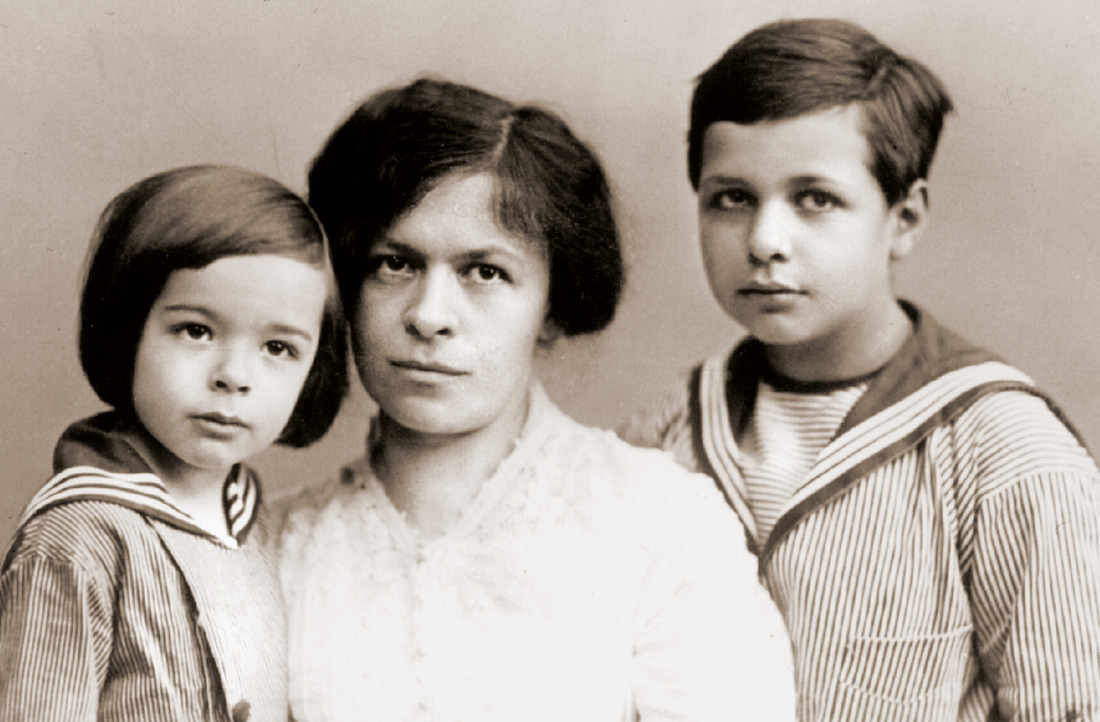
Mileva Marić with the two sons she had with Albert Einstein, Eduard (born in 1910) and Hans Albert (born in 1904), taken in 1914. Before they married, in early 1902, the couple had a daughter, but it is not known whether she died when she was an infant or was given up for adoption. When she was pregnant with her daughter, Marić failed the final examinations for her teaching diploma for the second time. / Hebrew University of Jerusalem
There is a story that Einstein’s 1905 paper on light quanta, in which he provided an explanation for Philipp Lenard’s surprising experimental results on the photoelectric effect, originated from information that Marić gained when she studied under Lenard at Heidelberg University in 1897. However, the course that Marić took at Heidelberg University was heat theory and electrodynamics (Renn & Schulmann, 1992, p. 82, Letter 1, n. 7), and there is no reason to suppose that Lenard would have discussed his current researches on the photoelectric effect on such a course. Moreover, we know from a letter he wrote to Marić that Einstein first found out about Lenard’s experiments in May 1901 (Renn & Schulmann, 1992, p. 54), and in any case the quantitative experimental results that Einstein explained were not published until 1902 (Stachel, 2005, p. 195, n. 9).
It has been frequently asserted that Marić assisted Einstein with the mathematics he needed for the special relativity theory. This unsubstantiated claim, based on nothing more than unreliable hearsay obtained some sixty years after the event and an evidence-free assertion in an unscholarly book (Michelmore, 1962, p. 41; Trbuhović-Gjurić, 1988, p. 93; see Esterson & Cassidy, 2019, pp. 105–110, 122–124), is inconsistent with the fact that the mathematics in the paper would not have taxed the abilities of Einstein, who was highly competent at conventional mathematics. Moreover, contrary to the claims about Marić’s supposedly exceptional mathematical abilities, from her Zurich Polytechnic entrance exams to her final diploma exams her grades in mathematical subjects were almost invariably moderate at best, and there is no evidence of any additional work by her after she finished her Polytechnic studies.
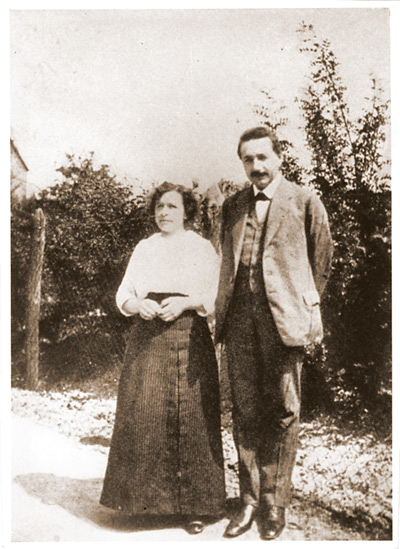
Mileva Marić and Albert Einstein in a picture taken in Kac (Serbia) in 1905. That year, Einstein published five great papers, which has been taken by some commentators as a sign that he had the help of his wife. However, the ideas that Einstein presented in his papers had been in gestation for several years. / ETH Bibliothek Zürich, Bildarchiv / Portr_03087 / CC BY-SA
That Einstein completed five important papers in a single year in 1905 has been taken as indicating he must have had assistance from his wife at that time (Krstić, 2004, p. 129). However, this fails to take into account that ideas contained in the papers had been in gestation for several years, and that he had colleagues at the Bern patent office with whom he was able to discuss them, most notably Michele Besso in regard to relativity (Fölsing, 1997, pp. 110–111, 115, 165–177).
It is significant that in her letters to her closest friend Helene (married name Kaufler Savić) in which she reported her current preoccupations, Marić never so much as hinted that these included assisting her husband on his scientific work. Moreover, on the occasions that she alluded to Einstein’s papers she assigned them solely to him (Popović, 2003, pp. 70, 88). According to Einstein’s colleague and biographer Philipp Frank, evidently reporting what Einstein told him, whenever he wanted to discuss his ideas «her response was so slight that he was often unable to decide whether or not she was interested» (Frank, 1947, pp. 34–35).
There are claims that Marić was seen working together with Einstein on his physics theories; however, these are based on nothing more than hearsay obtained more than five decades after the supposed events (Krstić, 2004, p. 105), and as such are worthless as evidence (Esterson & Cassidy, 2019, pp. 185, 233–234). It is significant that Trbuhović-Gjurić, who contacted the very same Marić family and friends when researching for her biography in the 1960s, did not cite any reports of this nature.
The Nobel Prize money
Much has been made of the fact that, as usually reported, Einstein gave his Nobel Prize money to Marić (Krstić, 2004, p. 107; Troemel-Ploetz, 1990, p. 420), supposedly in private recognition of her contributions to his scientific work. The truth is less straightforward. By the terms of their 1919 Divorce Decree, in lieu of alimony monies the anticipated Nobel money was to be deposited in a Swiss bank, and while the interest was assigned to Marić, she could only make use of the capital with Einstein’s consent (Milentijević, 2015, pp. 418–423), which was almost invariably given.
The Marić biographer Radmila Milentijević reports a request from Einstein in 1925 for Marić and her sons to sign declarations to the effect that, the Nobel money having effectively been turned over to her, they would not make any claims on his estate when he died. This was not acceptable to Marić, who refused to carry out his wishes. The letters Marić wrote to Einstein at that time, like many others, were not kept by Einstein, but from his replies we know that she had intimated to him that she was considering writing her memoirs. Einstein’s anger towards her in regard to this suggestion is interpreted by Milentijević (2015, p. 287) as resulting from Marić’s having threatened to reveal that she had contributed to Einstein’s scientific work, but a close reading of her account reveals that this is nothing but speculation on her part (Esterson & Cassidy, 2019, pp. 251–255). Einstein subsequently explained that his anger was because he had a strong aversion to personal matters being discussed in public. He also explained that his initial request was made to ensure that his second wife and two stepdaughters would be financially secure in the event of his premature death.
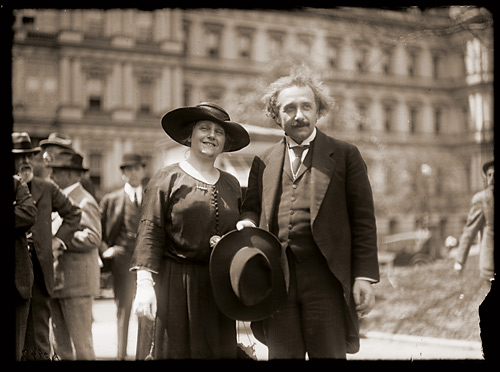
Albert Einstein with his second wife, Elsa, in 1921 in Washington DC. That year Einstein had won the Nobel Prize. By the terms of their 1919 Divorce Decree, in lieu of alimony monies, Marić would receive the interest from the anticipated Nobel money, which was to be deposited in a Swiss bank. Marić could only make use of the capital with Einstein’s consent. In 1925, Einstein asked Marić and their sons to give up any claims to his estate in the event of his death, so he could provide financial security for his wife and his two stepdaughters. Marić refused. / Harris & Ewing Collection, Prints & Photographs Division, Library of Congress, LC-DIG-hec-31011
In relation to Marić’s two-fold failure in the Zurich Polytechnic final diploma exams, there is one issue that must be addressed, namely the suggestion that she was the victim of prejudice on the part of the examiners (Gabor, 1995, p. 15). The historical obstacles for young women with the ambition to obtain higher education, especially in science, at the end of the nineteenth century are too well known to spell out here. For most countries in Europe at that time there were no such opportunities at all. However, one exception was the case of Switzerland, where, for example, Zurich Polytechnic admitted their first female student in 1876. The archival records for the Polytechnic indicate that a woman graduated from section VIA (for intending teachers of physics and mathematics) in 1894, two years before Marić enrolled for the same course. During the period of Marić’s time at the Polytechnic around one fifth of the students in the science and mathematics teacher training section VI were female (Stachel, 2002, pp. 30, 40). This does not, of course, preclude some prejudice by her examiners in Marić’s case. However, it should be noted that we know from a letter that Helene Kaufler wrote to her mother in July 1900 that Professor Weber offered Marić an assistantship, which her failure in the subsequent examinations precluded her from taking up. Interestingly, according to Kaufler, Marić had indicated that she did not wish to take up the offer, preferring instead to apply for a post as librarian (Popović, 2003, p. 61).
It must be added that none of the above detracts from Mileva Marić’s pioneering role in steadfastly pursuing an education in physics and mathematics at a time when opportunities for women in these fields were strictly limited. But the misrepresentation of Marić’s position in relation to Einstein’s scientific accomplishments performs a disservice by eclipsing the essential part she played in providing a solid foundation in his marriage which enabled him to devote himself entirely to the work that led to his being acclaimed as one of the greatest physicists in history.
REFERENCES
Einstein, A. (1987). The collected papers of Albert Einstein. Vol. 1. Princeton: Princeton University Press.
Esterson, A., & Cassidy, D. C. (2019). Einstein’s wife: The real story of Mileva Einstein-Marić. Cambridge, MA: MIT Press.
Fölsing, A. (1997). Albert Einstein. New York: Viking Penguin.
Frank, P. (1947). Einstein: His life and times. London: Jonathan Cape.
Gabor, A. (1995). Einstein’s wife: Work and marriage in the life of five great twentieth-century women. New York: Viking Penguin.
Gagnon, P. (2016). Appendix B. In Who cares about particle physics? Making sense of the Higgs Boson, the Large Hadron Collider and CERN (pp. 234–246). Oxford: Oxford University Press.
Krstić, D. (2004). Mileva & Albert Einstein: Their love and scientific collaboration. Kranjska, Slovenia: Didakta.
Michelmore, P. (1962). Einstein: Profile of the man. London: Frederick Muller Limited.
Milentijević, R. (2015). Mileva Marić Einstein: Life with Albert Einstein. New York: United World Press.
Popović, M. (Ed.). (2003). In Albert’s shadow: The life and letters of Mileva Marić, Einstein’s first wife. Baltimore: The Johns Hopkins University Press.
Renn, J., & Schulmann, R. (1992). Albert Einstein/Mileva Marić: The love letters. Princeton: Princeton University Press.
Stachel, J. (2002). Einstein from ‘B’ to ‘Z’. Boston: Birkhäuser.
Stachel, J. (2005). Introduction, Centenary Edition. In Einstein’s miraculous year: Five papers that changed the face of physics. Princeton and Oxford: Princeton University Press.
Trbuhović-Gjurić, D. (1988). Im Schatten Albert Einsteins: Das tragische Leben der Mileva Einstein-Marić. Bern: Paul Haupt.
Troemel-Ploetz, S. (1990). Mileva Einstein-Marić: The woman who did Einstein’s mathematics. Women’s Studies International Forum, 13(5), 415–432. doi: 10.1016/0277-5395(90)90094-E



